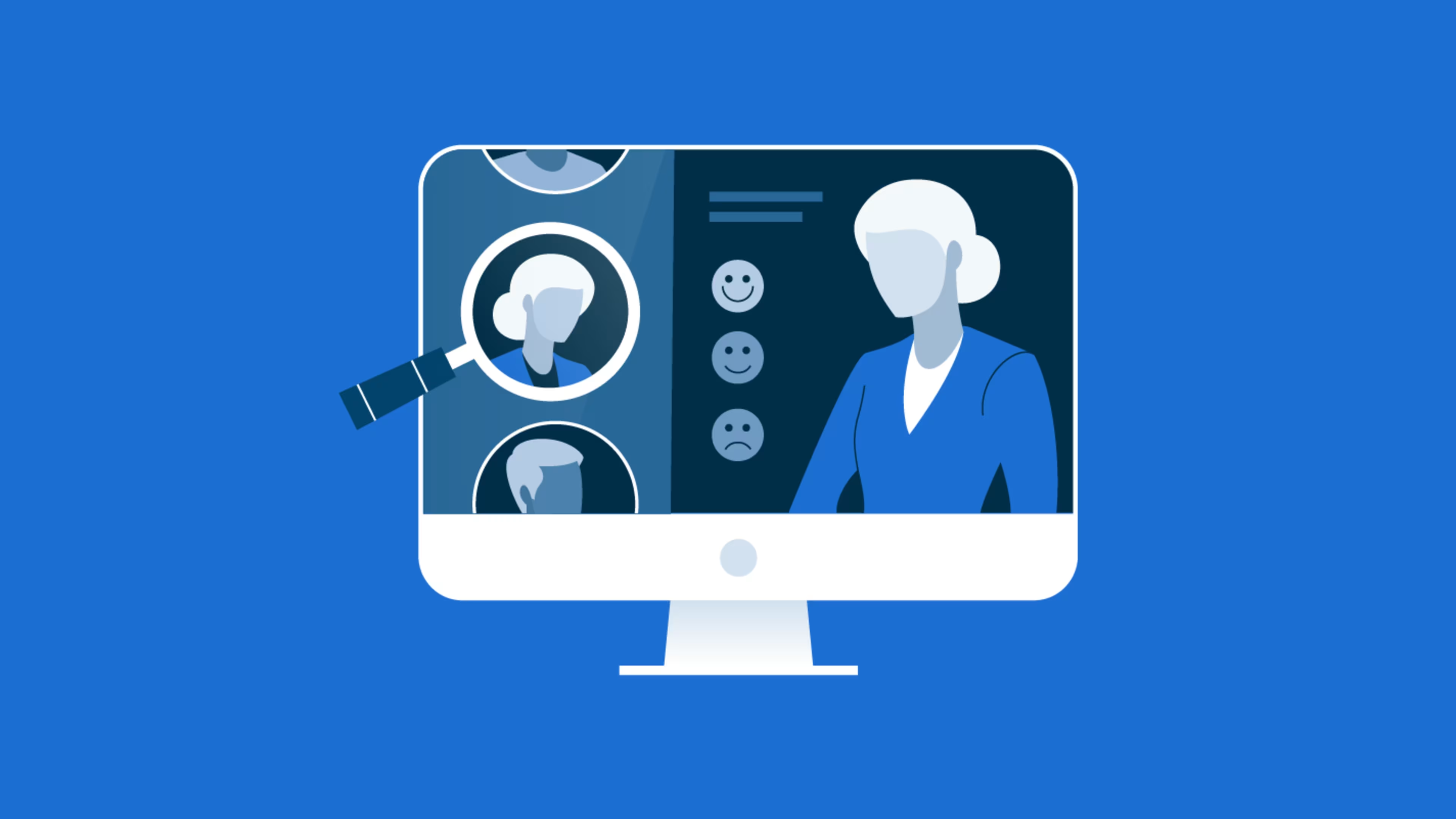Pick up four strategies for proactively minimizing bias in hiring decisions.
Despite the fact that diversity recruiting has been a top-of-mind priority for HR leaders since 2020, most organizations’ hiring practices still miss the mark[1][2]:
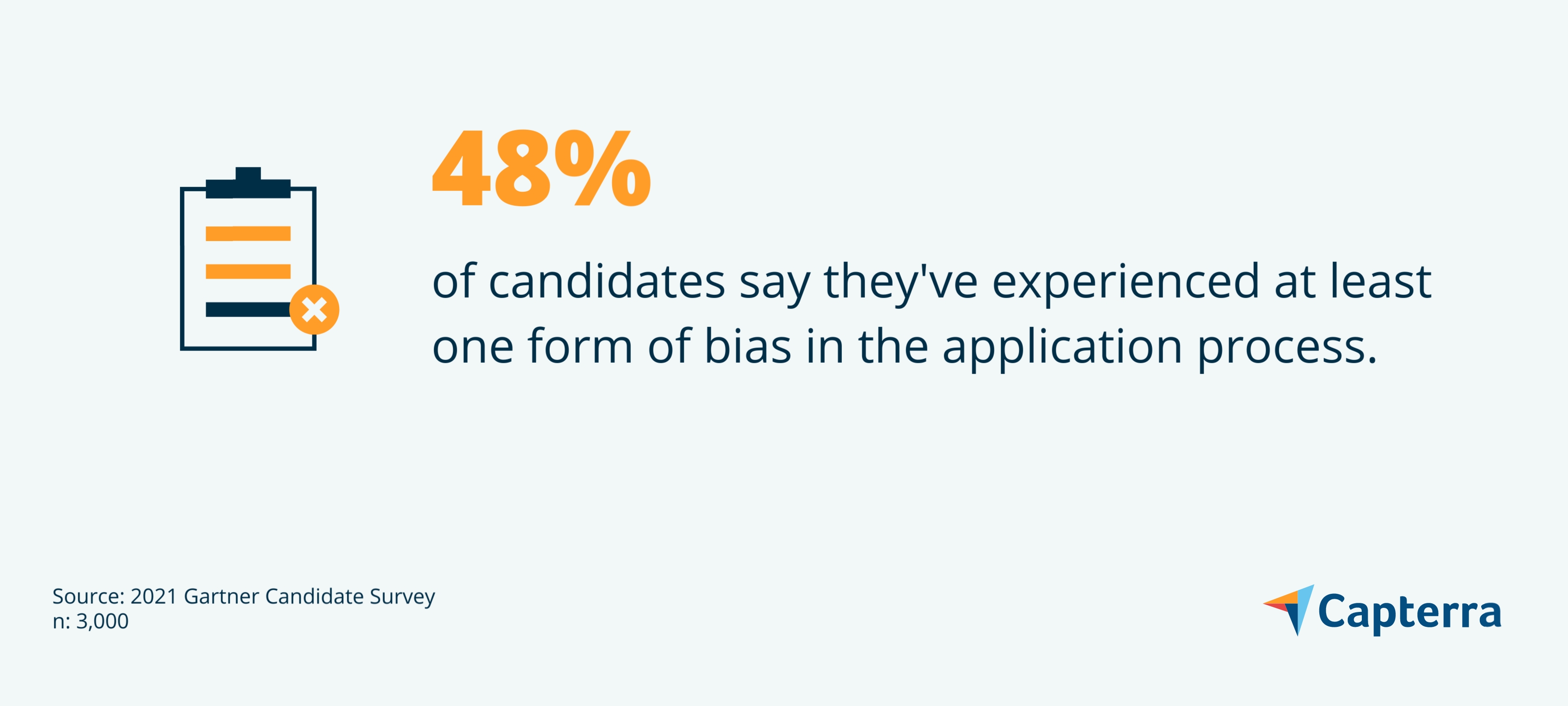
Whether you’re a recruiting leader or a D&I professional, you’re here to learn how to implement equitable hiring strategies that correct the pitfalls of your current process (such as the unconscious biases referred to in the graphic above).
With insights from experienced Diversity, equity and inclusion expert, Jen Davidson[3], and Gartner’s “5 Best Practices for Recruiting a More Diverse Workforce,”[1] we’ve created a research-backed guide that will help your recruiting team embrace equitable hiring practices.
Why do equitable hiring practices matter?
It all comes down to this: 76% of employees and job seekers say a diverse workforce is important to them when evaluating companies and job offers[1].
Considering the majority of candidates want to work for diverse organizations, it’s an effort worth investing in—but there’s more data to confirm this: Diverse organizations…
Experience improved financial outcomes: Ethnically diverse companies and gender diverse companies are 36% and 25% more likely, respectively, to financially outperform organizations that are of average diversity in their industry[4].
Have a better employer reputation: Of global jobseekers, 39% have turned down or decided not to pursue a job opportunity because of a perceived lack of inclusion. This trend is amplified among young millennials and members of Generation Z, for whom a “diverse and inclusive organization” is one of the top three things they look for in an employer[4].
Are more creative when it comes to problem solving: Studies show greater diversity can help teams focus more on facts, process those facts more carefully, and generate more creativity and innovation when the broader organization is inclusive and equitable[4].
Ready to hire a recruiting agency for your business needs? Browse our list of companies in the following areas:
How can organizations prepare to implement equitable hiring practices?
Equitable hiring practices (which are also called inclusive hiring practices) are recruiting strategies that organizations implement in an effort to cultivate a diverse workforce. But when it comes to diversity recruiting, there is no one-size-fits-all approach for success.
Davidson touched on this during our conversation, making the point that there’s a DEI maturity spectrum that all businesses exist on; on one end, there are organizations who want to be compliant and avoid breaking the law, and on the other, there are businesses who want to be known for diversity and inclusion.
“I think a lot of businesses don’t really know where they are on that spectrum, and they also don’t know where they want to be.”


Jen Davidson
Diversity, equity, and inclusion expert
Identifying where your business is on the spectrum and where you want it to be is an essential step if you want the rest of your DEI efforts to be successful. Otherwise, you may invest time and resources into tactics destined to fail.
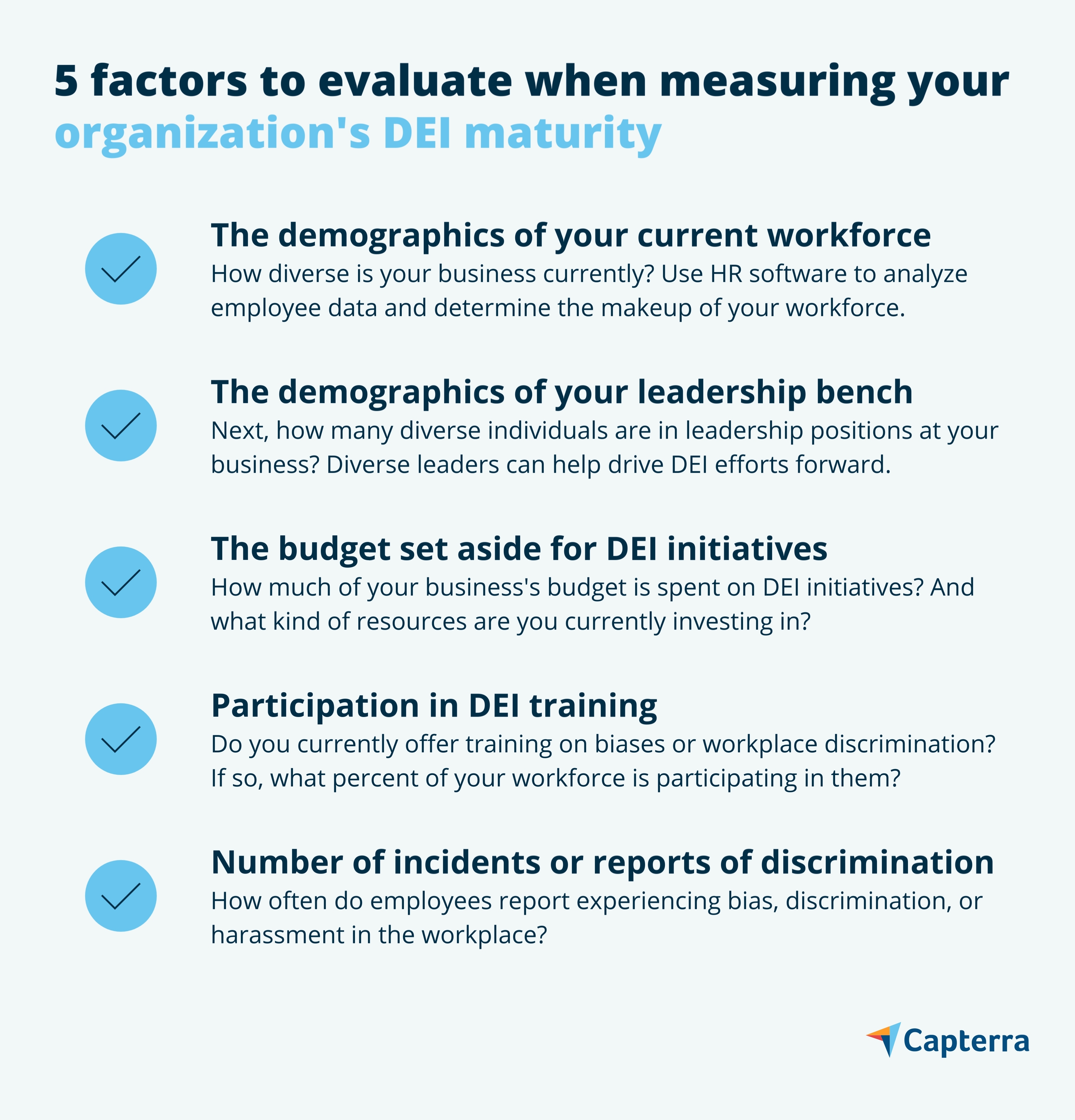
Use the considerations listed on the graphic above to determine where your business lands on the DEI maturity spectrum.
For example, if you have low workforce diversity and don’t have a DEI budget, your business falls on the less mature side of the spectrum. Alternatively, if you have a diverse leadership bench and next-to-no reports of workplace harassment or discrimination, your business has higher DEI maturity.
If your current organization’s DEI maturity level is on the lower end, implementing the four equitable hiring practices below can help put you on the right path.
4 equitable hiring practices and how to implement them
1. Source candidates from a variety of channels
First things first: Are you as an employer attracting diverse talent?
If you’re not, it’s time to diversify where you’re sourcing candidates from. Expanding your talent pool can be an effective way to get more diverse candidates in your talent pipeline, but few organizations do this successfully. In fact, only 6% of recruiting staff reported filing their most recent requisition from a nontraditional source[1]. Instead, recruiters tend to rely on the same, traditional talent pools and miss out on qualified, diverse talent from nontraditional sources.
Davidson makes the point that attracting diverse talent isn’t actually a problem for every organization. She says:
“The starting point is actually to see if attraction is your problem. So, do you have the data to say that you aren't getting diversity coming into or applying for your roles?”
Jen Davidson
Keeping this in mind, analyze applicant data from your applicant tracking system or recruiting platform to determine whether or not you are receiving applications from diverse candidates before making changes to your sourcing strategy.
If you are, then you should maintain your current sourcing strategies and focus on the steps that follow in the recruitment process. But if you aren’t, then you need to evaluate your current methods and diversify where you source candidates from. We’ve provided an overview of several nontraditional sourcing methods you can use below, broken down by role experience level.
Role experience level | Sourcing method | Why? |
|---|---|---|
Entry | Campus recruiting or summer internship programs work well for sourcing diverse talent for entry-level roles. Aim to work with a wide selection of colleges and universities, as well as trade schools or bootcamps to engage talent with nontraditional educational journeys. | Sixty-seven percent of D&I leaders report using summer internship programs for diverse students and 61% report using diversity campus recruiting[1]. |
Mid | Diversity referrals, a version of an employee referral program, work well for reaching underrepresented talent at the senior and middle levels (where representation gaps are much larger). Diversity referral programs work much like regular employee referral programs, where employees are encouraged to recommend professionals in their network for open roles. | Less than a quarter (24%) of D&I leaders report using diversity referrals. |
Senior | Even organizations that succeed at hiring diverse talent into entry-level roles often struggle to advance these employees into more senior positions. For that reason, internal recruiting is recommended for advanced roles. Check out our guide on career pathing for more specific advice on how to advance existing talent into senior roles. | This is already a popular strategy amongst organizations: 67% of D&I leaders partner with organizations and nonprofits dedicated to empowering underrepresented talent. These organizations help existing employees from underrepresented groups gain the necessary training and skills to become attractive internal candidates for more senior roles. |
2. Build diverse hiring teams
Fifty-five percent of D&I leaders report using diverse interview panels, a tactic that mitigates unconscious bias during the interview process by bringing a range of backgrounds and perspectives to the decision-making process[1].
Considering that bias during the hiring process is one of the major hurdles for organizations looking to improve their DEI maturity, ideally that percentage would be closer to 100%. Affinity bias, one of the most common types of biases, refers to the phenomenon where individuals feel a preference toward those they have something in common with. Assembling a team of decision makers with different personalities, life experiences—and yes—physical attributes lowers the chance of affinity bias leading to a bad hiring decision.
In addition to reducing unconscious biases, another benefit of building diverse hiring teams is that candidates get a better impression of your company culture. To put it simply, you’re showing candidates that people of all kinds are valued at your organization.
When assembling a hiring team for a new requisition, aim to involve employees from different generations, genders, and cultural and professional backgrounds. This is easier said than done if your in-house recruiting team is homogenous, but one workaround is to involve an employee from the department connected to the open role during the interview process.
If you opt to do this, just make sure you properly prepare non-HR employees to interview candidates by training them to follow a structured interview process—but more on that below.
Alternatively, you can use a third party service provider that specializes in recruiting diverse talent.
3. Use structured interview techniques
One topic that came up during our discussion with Davidson is the need for hiring teams to determine what they’re assessing candidates for and how ahead of interviews. Without doing this, you run the risk of interviewers making hiring decisions based on their own gut feelings about a candidate rather than evidence that’s brought forward during the interview.
“We’ll ask them why they want to join us. We’ll ask them what their strengths are. But when you think about these questions, what are they actually telling you about the candidate? They’re hypothetical and they’re self-reflective. There’s no evidence behind them.”
Jen Davidson
A structured interview process helps negate unconscious biases by making sure that each candidate has as similar of an experience as possible. With structured interviews, candidates meet the same people and answer the same interview questions in the same order.
To further minimize any chance of biases influencing hiring decisions, we suggest developing a scoring system with examples of candidate answers at each level so that it's straightforward to compare applicants to one another.
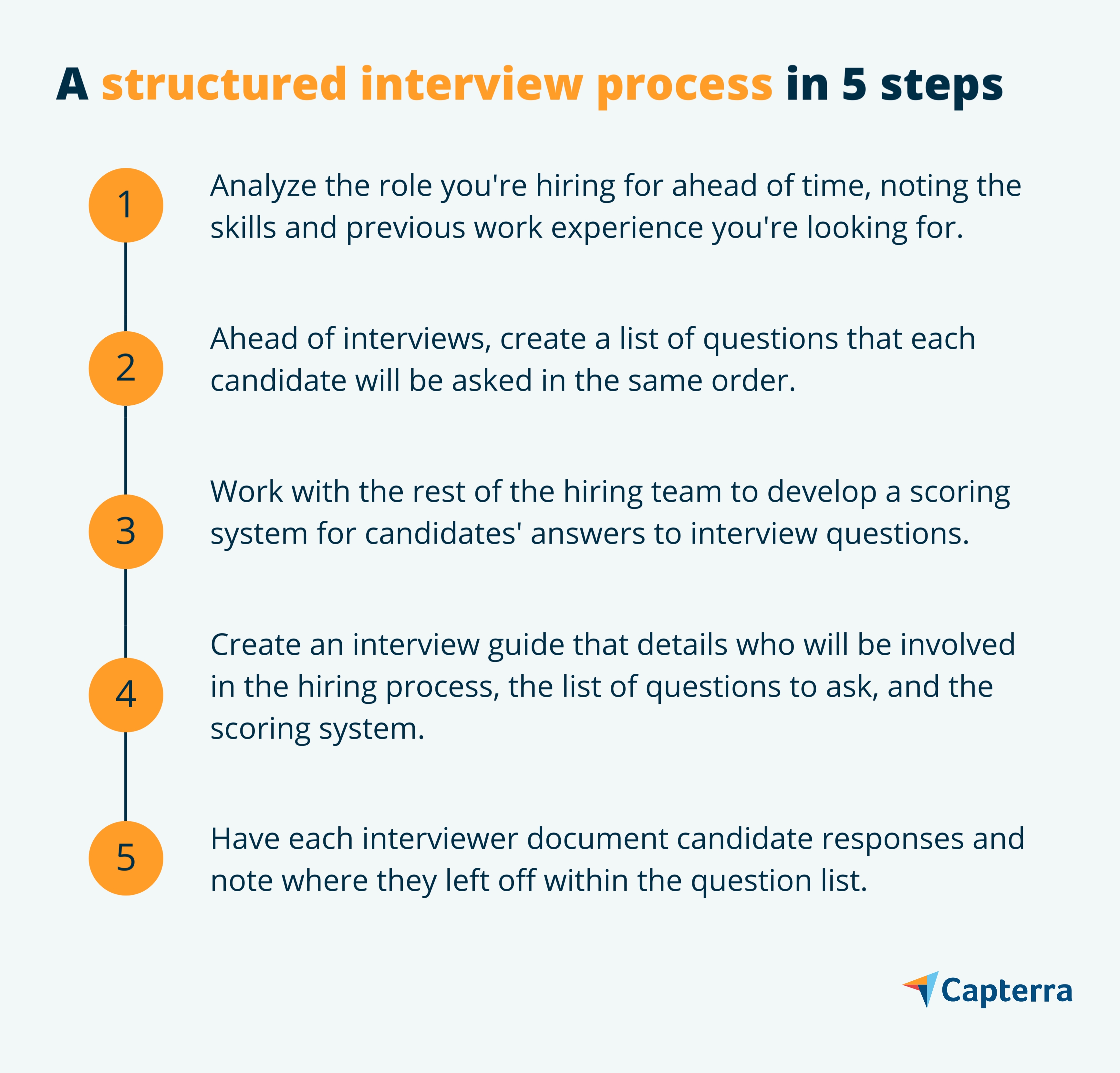
4. Use inclusive language on your website and job postings
Job descriptions, as well as careers pages, provide the first impression potential employees get of your organization. Using the wrong language in these settings can drive underrepresented talent away from your company before they even hit “submit application.”
For example, using terms like “he” or “she” instead of “they,” or “recent graduate” instead of “entry level candidate” can unintentionally exclude individuals who don’t identify with those terms. Further, avoid using phrases like “must be able to work in a fast-paced environment” as some candidates may interpret this as a sign of burnout culture.
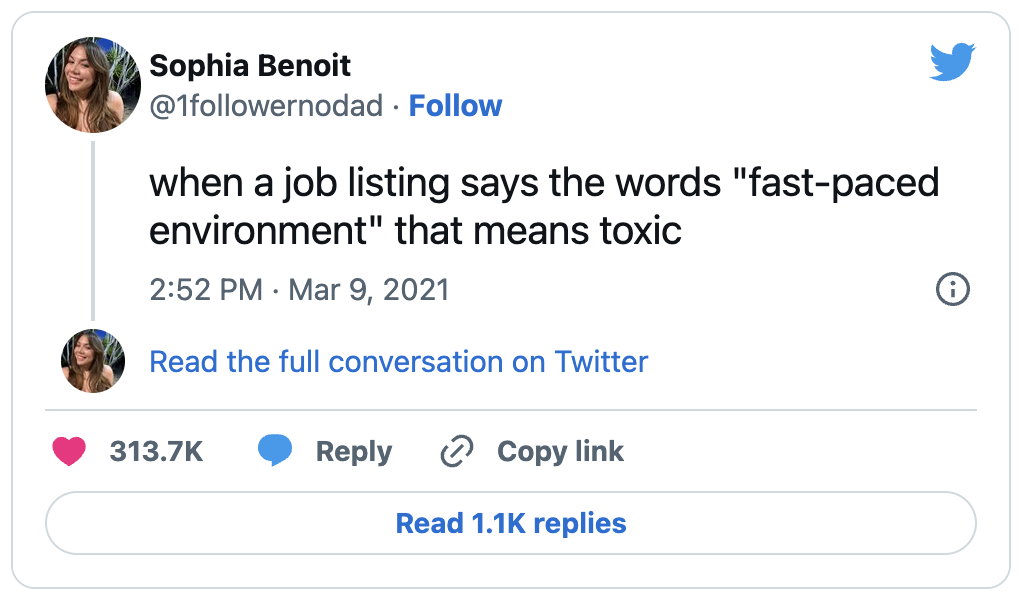
A tweet calls out the negative connotation of a commonly-used phrase in job descriptions
To quote Davidson:
“You might have language within your job adverts and job descriptions that seems a bit aggressive—such as the ‘work hard, play hard’ mentality. These kinds of things give people an impression of how inclusive the culture is.”
Jen Davidson
We’ve compiled a list of do’s and don’ts for writing inclusive job descriptions below. Introduce these best practices to your recruiting team, then audit your current careers page and remove any problematic language.
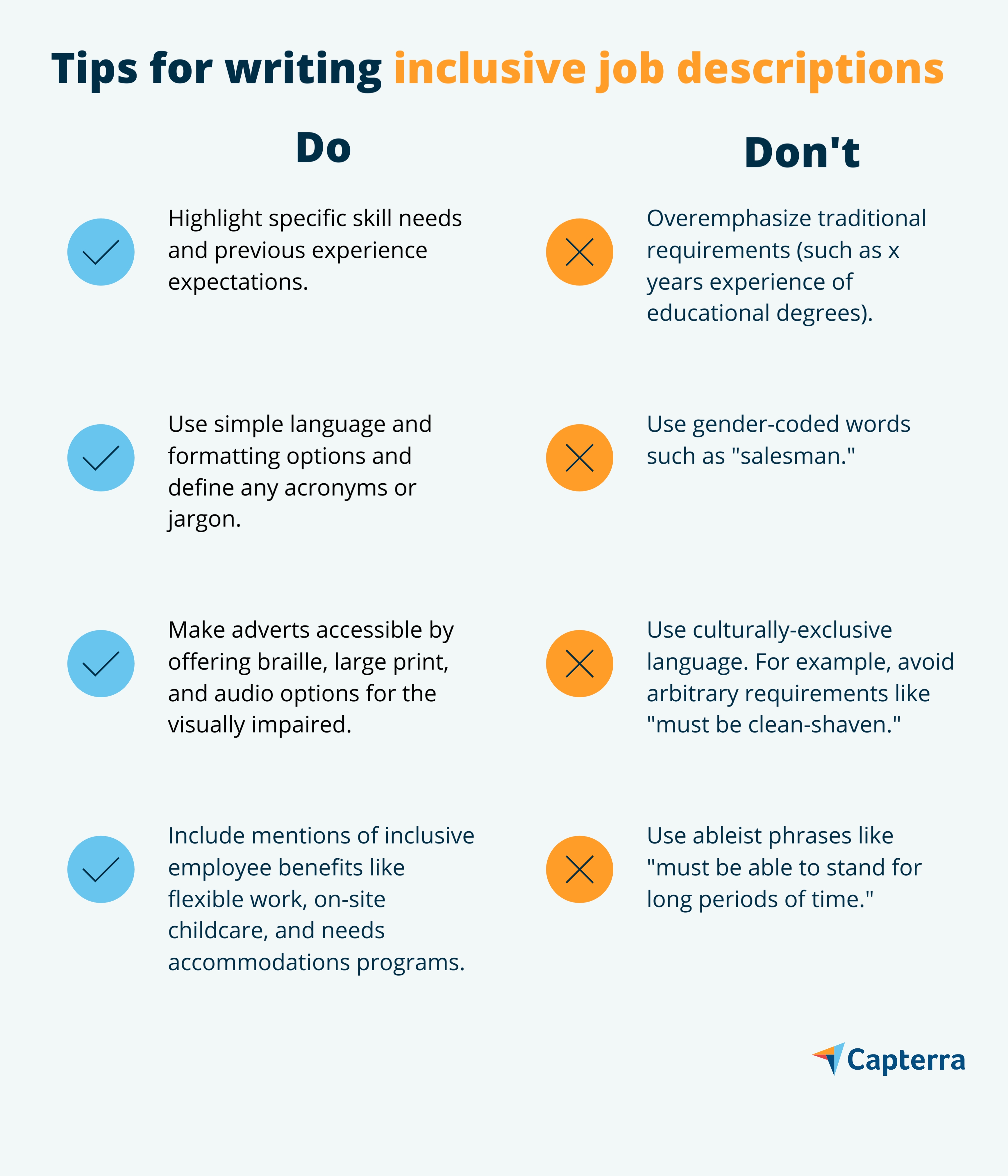
Start tackling biases in your workplace today
Davidson’s final advice for businesses looking to build a diverse, inclusive culture? Get the basics right. Know what you’re aiming for (meaning, what level of DEI maturity) and have the policies in place that help you get there.
“...and ensure that anything that has to do with assessing people's performance (such as promotions and recruitment) all join together and is as objective as possible.”
Jen Davidson
On that note, you can find a recap of the equitable hiring practices covered in this guide here:
In the meantime, don’t miss these related articles:
Note: Questions and responses have been edited for brevity and clarity.

